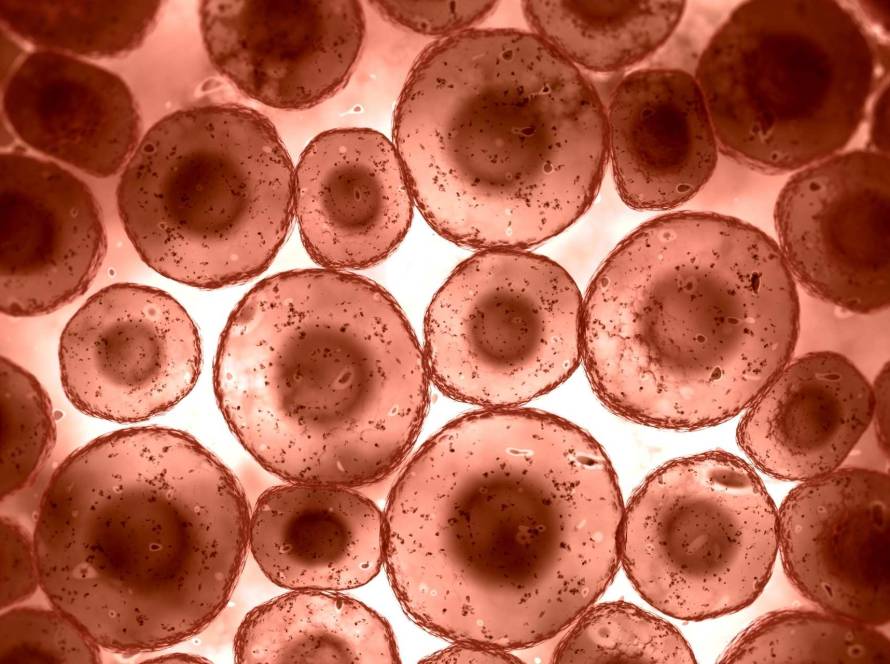NF-κB (pronounced “n-f kappa b”) was found about 40 years ago. This remarkable protein family consists of five transcription factors that regulate inflammation and immunity in the body. The protein complex works like a molecular switch. It activates genes that control our immune response when our body detects stress, infection or damage.
In this piece, we’ll get into what is NF-kB, how this powerful signaling system works, its effects on health and aging and ways to regulate it for better long-term health.
What is NF-kB and how does it work?
NF-kB represents a family of five transcription factors that control gene expression throughout the body. These proteins help us understand how inflammation works at the molecular level.
NF-kB as a transcription factor complex
The NF-kB family has five members: p65 (RelA), RelB, c-Rel, p105/p50 (NF-kB1) and p100/p52 (NF-κB2). A shared 300-amino acid region, called the Rel homology domain (RHD), allows them to create various dimer combinations. This domain handles multiple tasks: it binds to DNA, creates dimers, interacts with inhibitory proteins and moves into the nucleus. NF-kB can form up to 15 different dimeric complexes through these combinations. Each complex might control different genes.
The role of IkB and IKK in activation
NF-kB stays inactive in the cytoplasm during normal conditions. Inhibitory proteins called IκBs keep it bound there. This binding hides NF-kB’s nuclear localization signal and prevents it from entering the nucleus to activate genes. The IkB kinase (IKK) complex controls NF-kB activation. This large 700-900 kDa protein assembly phosphorylates IκB proteins. Two catalytic subunits, IKKα and IKKβ, work with a regulatory subunit called IKKγ (or NEMO). The activated IKK adds phosphate groups to specific serine residues on IkB proteins. This marks them for ubiquitination and breakdown by the proteasome. Once its inhibitor breaks down, NF-kB moves freely into the nucleus to regulate gene expression.
Canonical vs non-canonical pathways
NF-kB activation happens through two different signaling cascades. The canonical pathway responds faster to inflammatory triggers and bacterial components. This pathway needs IKKβ and NEMO. It targets IkBα for breakdown and activates RelA/p50 dimers. The activation happens quickly but doesn’t last long, perfect for immediate immune responses.
The non-canonical pathway works differently. It moves slower and responds to specific signals like B-cell activating factor (BAFF), lymphotoxin-β and CD40 ligand. This pathway relies on IKKα and another kinase called NIK (NF-kB-inducing kinase) instead of IKKβ or NEMO. It turns p100 protein into p52, which then pairs with RelB. The non-canonical pathway’s main job involves developing lymphoid organs and maturing immune cells rather than causing immediate inflammation.
What does NF-kB do in the body?
NF-kB acts as a key regulator in multiple biological processes. It conducts an intricate symphony of immune and inflammatory responses throughout the body.
Regulation of immune response
NF-kB stands as the life-blood of immunity and controls both innate and adaptive immune functions. This transcription factor activates faster in response to various stimuli, including pathogens, stress signals and pro-inflammatory cytokines such as TNF and IL-1. NF-kB coordinates lymphocyte development by affecting proliferation and protection from TNF-induced apoptosis.
NF-kB’s influence reaches beyond cellular responses. It helps develop secondary lymphoid organs and regulates thousands of genes involved in immune defense. These genes include cytokines, chemokines, antimicrobial peptides and interferon-stimulated genes.
Control of inflammation and cytokine production
NF-kB works as a master switch for pro-inflammatory gene expression at inflammation’s core. When activated, NF-kB triggers transcription of several inflammatory mediators:
- Pro-inflammatory cytokines (TNF-α, IL-1β, IL-6);
- Chemokines (IL-8);
- Adhesion molecules (E-selectin, VCAM-1, ICAM-1);
- Enzymes like cyclooxygenase-2 (Cox-2).
So, dysregulated NF-kB activation contributes to various inflammatory diseases, including rheumatoid arthritis, inflammatory bowel disease, multiple sclerosis and asthma. NF-kB drives the development of the pro-inflammatory M1 phenotype in macrophages, which produces cytokines involved in inflammatory processes.
Influence on cell survival and apoptosis
The sort of thing I love about NF-kB is its dual role in cellular life and death decisions. NF-kB can function as both a pro-survival and pro-apoptotic factor, depending on the cellular context. NF-kB promotes survival in many cell types by inducing several anti-apoptotic genes. These genes include cellular inhibitors of apoptosis, X-chromosome-linked inhibitor of apoptosis and Bcl-2 family members.
On top of that, it blocks apoptotic signaling by fighting reactive oxygen species accumulation. This happens through induction of antioxidant factors such as Ferritin heavy chain, manganese superoxide dismutase and Glutathione-S-transferase.
NF-kB plays a proapoptotic role in neutrophils and certain other cell types, which might represent an important anti-inflammatory mechanism. This complex regulation of cell death pathways shows how NF-kB acts as a sophisticated biological rheostat. It fine-tunes the balance between inflammation, immunity and cellular homeostasis.
How NF-kB contributes to chronic inflammation and aging
The way our bodies break down with age involves complex molecular mechanisms. NF-kB signaling stands out as a key driver of what scientists now call “inflammaging.”
The concept of inflammaging
Inflammaging describes the chronic, low-grade inflammation that gets worse as we age and causes many age-related diseases. Our bodies need acute inflammation for protection, but this ongoing inflammatory state becomes harmful over time. NF-kB activity rises substantially in aging tissues. The body becomes more sensitive to age-related stressors like oxidative damage, DNA damage, mitochondrial dysfunction and chronic infections.
This increased activity creates a dangerous cycle. NF-kB activation produces inflammatory cytokines that damage cells, which then causes more NF-kB activity. The body depends more on innate immunity as adaptive immunity declines with age (immunosenescence). This shift accelerates NF-kB activation and adds to the chronic inflammatory profile we see in older adults.
NF-kB and cellular senescence
Cellular senescence, when cells stop dividing permanently, guides inflammaging through the senescence-associated secretory phenotype (SASP). NF-kB largely controls this collection of pro-inflammatory cytokines, chemokines, growth factors and proteases. Senescent cells build up as we age and release about 40-80 different inflammatory factors that speed up age-related degeneration.
DNA damage response plays a crucial role here. DNA damage activates ATM kinase, which triggers NF-kB by phosphorylating NEMO (NF-kB essential modulator). Senescent cells develop lasting nuclear DNA damage foci called DNA-SCARSs that keep NF-kB constantly active. Research shows that blocking NF-kB in aged tissue can bring back gene expression patterns typical of younger tissue.
Links to age-related diseases like arthritis and Alzheimer’s
Problems with NF-kB regulation show up in many degenerative conditions as we age. Overactive NF-kB in Alzheimer’s disease contributes to neuroinflammation, a major factor in the disease’s progression. Scientists have found higher NF-kB levels in the cerebral cortex of Alzheimer’s patients, which correlates with increased β-site amyloid precursor protein cleaving enzyme-1 (BACE1). Bacterial lipopolysaccharide, which strongly activates NF-kB, appears to play a role in Alzheimer’s development.
NF-kB guides inflammation, cartilage breakdown, cell growth and pannus formation in arthritic conditions. This transcription factor controls genes that damage joint tissue and produce pro-inflammatory cytokines that make the disease worse. Many anti-inflammatory medications for arthritis target NF-kB signaling pathways for this reason.
How to regulate NF-kB for better health
Controlling NF-kB activation provides promising ways to reduce inflammation and slow down age-related decline. Scientists have discovered several methods to adjust this powerful signaling pathway that leads to better health.
Dietary compounds that inhibit NF-kB
Natural compounds can block NF-kB activation effectively. Curcumin from turmeric inhibits IκBα kinase and Akt activation and stops NF-kB activation. This compound works really well, but the body struggles to absorb it and breaks it down quickly.
Green tea contains Epigallocatechin gallate (EGCG) that blocks STAT3 phosphorylation and STAT3-NFκB interaction by a lot. EGCG specifically prevents LPS-induced IκBα degradation and RelA nuclear translocation. These compounds work better together, which improves their anti-inflammatory effects.
Exercise and stress reduction
Regular moderate exercise suppresses NF-kB signaling by reducing IκBα/NF-kB pathway activation and lowering inflammatory markers like IL-6 and TNFα. Exercise kicks up the SIRT1-AMPK-PGC1α axis, which blocks NF-kB signaling. NF-kB becomes active for a short time during exercise and IκBβ phosphorylation rises sharply with exhaustion.
Emerging therapies and drug targets
Scientists have developed new treatments that target the NF-kB pathway through different mechanisms. Research shows the oligosaccharyltransferase complex OST-A is vital for TLR4-dependent NF-kB activation. NGI-1 stops this complex by attaching to its catalytic subunit STT3A, which keeps TLR4 from reaching the cell surface.
Supplements with potential NF-kB modulation effects
Many polyphenolic compounds besides curcumin and EGCG can regulate NF-kB:
- Quercetin from onions and berries blocks IkB phosphorylation and stops NF-kB nuclear translocation;
- Resveratrol in red grapes prevents IKK complex activation;
- Gamma-tocotrienol, a natural vitamin E form, improves A20 expression to block TNFα-stimulated activation of TAK-1, JNK and NF-kB.
Mitochondrial health and NF-kB signaling
Mitochondrial function and NF-kB signaling affect each other in both directions. Problems with mitochondria trigger inflammatory pathways, especially when apoptotic caspases get blocked. The cell responds with extensive ubiquitination to support pro-inflammatory NF-kB activation after mitochondrial outer membrane breaks down. Good mitochondrial health through exercise and proper diet helps keep NF-kB activity in check.
NF-kB science teaches us something fundamental about longevity, biological systems that protect us when young might contribute to our decline later in life. But these systems aren’t broken, they evolved for a different world than our modern one. Then, learning to carefully readjust NF-kB signaling could help match our ancient biology with our longer lifespans, maybe even tapping into new ways for everyone to age better.


